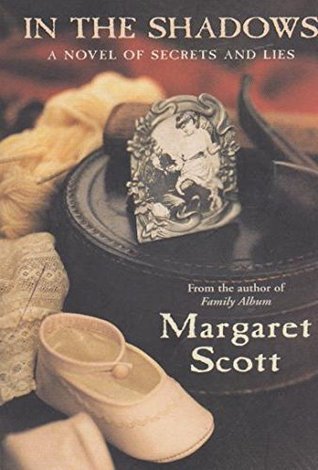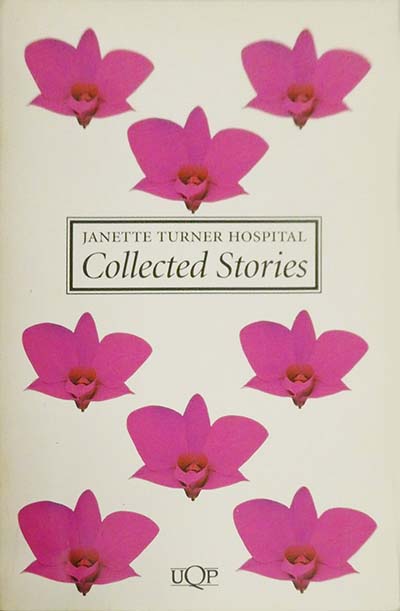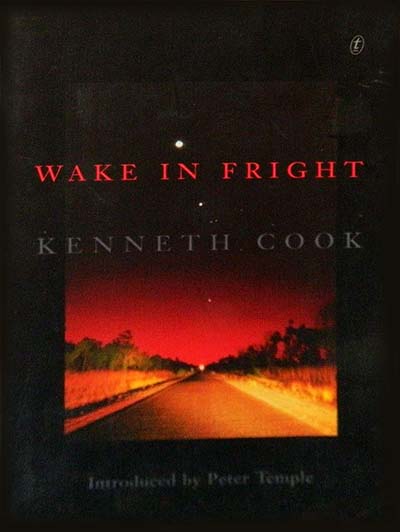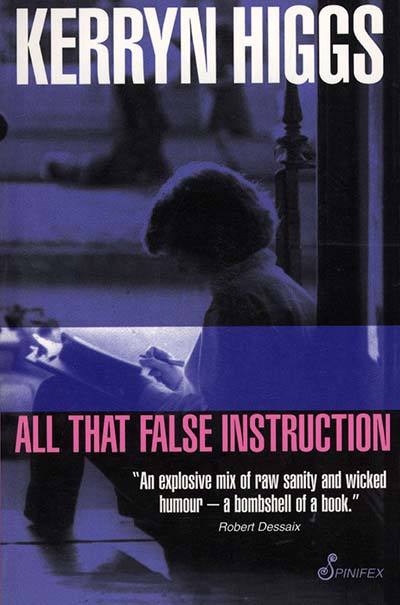- Free Article: No
- Contents Category: Australian Fiction
- Custom Article Title: Delys Bird reviews Four Australian Fiction Novels
- Review Article: Yes
- Article Title: A Welcome Quartet
- Online Only: No
- Custom Highlight Text:
These four titles are reissues of well-known texts, or of the work of well-known writers, from four different publishers. A good sign perhaps, very welcome at a time when publishing seems ever more ephemeral and when many works, even from the recent past, are unavailable.
However, I am not convinced that Margaret Scott’s novel In the Shadows, titled The Baby Farmer when first published in 1990, quite fits the category calling for republication. Better known as a poet than a prose writer, Scott is versatile in both genres, and In the Shadows is at once witty, erudite, and accessible. Based on the events surrounding a London murder trial in the 1870s, its settings, characters, and situations are historically convincing and often grippingly related. It is hard to tell, however, whether this is a straight-period thriller or a parody; there are elements of both. Perhaps if it settled on one or the other mode, its rather mannered prose and often-ponderous dialogue would gain vitality.
 In the Shadows by Margaret Scott
In the Shadows by Margaret Scott
Vintage, $22.95pb, 264pp
Telling the story of a notorious gang who enticed unwanted babies – and money for their ostensibly secure relocation – from their mothers, then disposed of them, it sets up a complex plot involving an intricate network of relationships as the crime of the baby farmers is uncovered. The novel ends with all the major characters brought together, to the unpleasant surprise of the awful Colonel Fellowes. Boarding a ship bound for the Australian colonies, looking forward to a ‘new life of freedom and delight’ with his extremely young and beautiful female companion, Fellowes finds himself trapped. On one side are two women carrying babies. One, his former maidservant, is holding his child; the second has the child of Fellowes’s companion. On the other side are his estranged wife, son, and daughter. This exaggerated linking of all the narrative threads is amusingly reminiscent of both the demands of the nineteenth-century novel for closure and of the function of the voyage to the colonies in many of those novels.
Janette Turner Hospital’s Collected Stories brings together her work from two former collections, Dislocations (1987) and Isobars (1990), which make up the first two sections of the book. The third section, ‘North of Nowhere’, contains stories from various publications from the 1990s. Turner Hospital writes great short stories (is the short story the definitive Australian genre?); this is a wonderful collection with many rewards for readers. Moving between the effortlessly achieved realism of many of the stories and the postmodernism of others, the collection sets up suggestive relationships among them and would make a superb teaching text. The stories move, too, between many of the locations of Turner Hospital’s long fiction, including the Queensland of her childhood, India and Canada. And the different voices of the often first-person narrators are compelling; they stay with me long after each reading.
 Collected Stories by Janette Turner Hospital
Collected Stories by Janette Turner Hospital
UQP, $22.95pb, 431pp
The first story, ‘Happy Diwali’, is exquisitely funny and unutterably poignant. Its initial occasion is the annual celebration of a Hindu festival, Diwali, by a group of Indian people of extraordinarily mixed backgrounds in the auditorium of the community college in what is now their Canadian home town. The narrator’s description of her own background is representative both of the cultural complexity of this immigrant group and of the narrative’s poise and restraint: ‘I left Goa at the age of fifteen with one suitcase, a Parsi family name, a saint’s Christian name ... a history of family acrimony, and a Goan’s happy nonchalance with it all. It is wise to acquire imperturbability with a name like Perpetua Engine-wallah.’ The story’s second occasion is also an annual one, when Perpetua and the Eton-educated, impoverished, dethroned, but regal Prince Sani dine and spend a night together. It is their last, since each is about to enter an arranged marriage. At the end, Perpetua, weeping for what has been but also content with the thought of her future, remembers the words of her father when she was eight: ‘We love best what we have lost forever.’
What is not said, not written, is always as important in these stories as what is. And they all resonate, in their cultural complications and wry narrative observations and sudden, often shocking, moments of revelation. In ‘Bondi’, Tom, the husband of the good-girl cousin who is visited by her bad-girl relative, observes ‘that the children of True Believers go one of two ways, and that there is a delicate ecology within families’, setting up waves of possibility among the relationships of the story. The question of the now aged, drunken, and disoriented great writer of ‘To Be Discontinued’ of Einstein when he arrived at Princeton from Germany in 1932, ‘Kann you tell me, ver iss I am?’, hovers over that story with its random, indeterminate conjunctions. Such moments are everywhere: this collection is essential reading.
A prolific novelist, Kenneth Cook is best remembered for his novel Wake in Fright (1961), itself probably better known because of the stunning 1971 film of the same name. Wake in Fright is republished with a short introduction by Peter Temple, the crime novelist. A quintessential story of Australian masculinity, Wake in Fright’s reappearance is timely when so much attention is being paid to what it is to be an Australian male. It is also terrific to have access to the written text again for fruitful rereading in conjunction with the film. This is a spare, naturalist narrative with none of the subtlety of Turner Hospital’s writing, and it can be irritatingly obvious. At the end, having thought his thoughts about man’s ingenuity and the potential pattern of life’s circumstances, John Grant, the young schoolteacher whose story it is, thinks: ‘what I can’t altogether see is why I should be permitted to be alive, and to know these things.’
 Wake In Fright by Kenneth Cook
Wake In Fright by Kenneth Cook
Text, $25pb, 204pp
Such earnest directness is no longer fashionable. But Wake in Fright still repays attention. John Grant’s enforced and terrifying self-education takes place when he leaves his one-teacher school in Tiboonda, where there is only a railway line and a pub, red earth, and limitless distance, to travel to Sydney, 1,200 miles away, for his summer holiday. Before catching a plane, he must spend a night in Bundanyabba, a mining town. That one hot night, Grant’s plans collapse in a haze of beer and gambling. The next morning, horribly hungover and broke, he must begin to confront his middle-class complacency and his contempt for the raucous physicality of the male Australian world where he is now trapped. During his futile attempts to escape over the next few days, he is reduced to absolute self-loathing. His journey is both shocking and illuminating.
Saving for last what is for me in many ways the best, All That False Instruction was first published in 1975 at a time when the author felt she must hide her identity behind a pseudonym, Elizabeth Riley. It is an important text for a range of fields, including radical feminist and lesbian writing. Overlong perhaps and with awkward moments, this novel nevertheless realises brilliantly the social conditions that gave rise to the 1970s feminist consciousness and politics that in turn enabled the women’s writing of the 1980s. This careful reissue surrounds the novel with an apparatus that gives it a significant historical and political context. Harriet Malinowitz’s critical introduction traces her discovery of the novel and its writer, and Kerryn Higgs’s afterword recounts the story of its genesis and original publication.
 All That False Instruction by Kerryn Higgs
All That False Instruction by Kerryn Higgs
Spinifex, $24.95pb, 252pp
One of the memorable aspects of All That False Instruction is its expression of the distinctive Australian female vitality of the narrator–protagonist, Maureen Craig. Growing up in the 1950s and studying at university in the 1960s, Maureen struggles to achieve a subjectivity and a social place completely at odds with the contemporary stereotypes of femininity and the extraordinarily conservative ideologies of the time. As Kerryn Higgs points out in her afterword, she wrote the book from 1971 to 1972 – ‘pre-women’s and pre-gay liberation days’ – when the contradictions that structured women’s lives remained unanalysed and often unrecognised. All That False Instruction is marked by what Malinowitz calls its ‘mixture of humour and pathos’ and its hero’s capacity for ironic insight into her often floundering attempts to establish her identity, not simply in sexual terms. Among this group of revivals, the reappearance of All That False Instruction is especially gratifying.


Comments powered by CComment